
Benefits from 30 herbs in ThiaPro™ compress
Combined together the herbs contribute to the following:
* reduces pain, swelling due to injuries * reduces headaches * reduces fevers * increases blood flow * improves circulation * relaxes muscles *energizes internal organs * soothes tension and soreness * improves breathing * helps fight colds, coughs bronchitis * detoxification * helps treat skin diseases * improves skin complexion
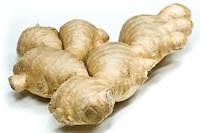
Ginger Root
Cassumunar (ginger root) is known to be the anti-inflammatory ingredient of ginger. It is used for antiseptic treatment of wounds, bruises, swellings, muscle pain, strain or distortion, treatment of colds, sore throats and asthma (bronchodilator). It also has a beneficial effect on the digestive system.
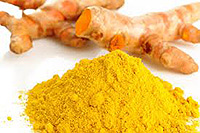
Tumeric
Turmeric has a golden yellow color and has an antiseptic, antirheumatic, analgesic, anti-inflammatory effect. It is used as a digestive stimulant, as well as for skin diseases and irritations. Turmeric enhances skin complexion including skin color, tone and softness.
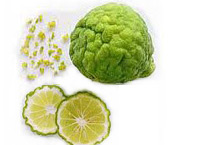
Kaffir Lime
Natural disinfectant and odor remover, antioxidant with healing features used for colds, congestion, digestion, menstruation and to regulate blood pressure.
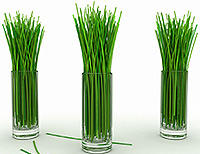
Lemongrass
Lemongrass works as an anti-inflammatory, digestive, expectorant agent, applied for release of tension, digestive disorders, colds and treatment of skin infections.
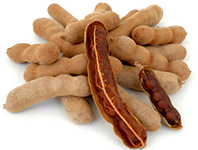
Tamarind
Tamarind is a common ingredient in Thai cuisine with an antiseptic and blood purifying effect. It is used for constipation, colds, fever, as well as skin cleansing and refining.

Camphor
Camphor has a strong antiseptic, analgesic, anti-inflammatory, antirheumatic, diaphoretic effect. It can be absorbed through inhalation helping as a bronchodilator with asthma and rhinitis. It also stimulates the brain, heart and blood circulation. It help to ease stress, anxiety, depression and insomnia.
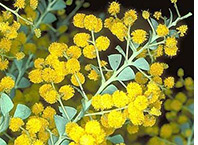
Acacia
This can be used externally for dry skin conditions including dandruff, and to heal wounds. Internally it can be used as a laxative or as an expectorant.
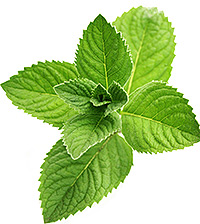
Menthol
Used as a carminative agent and improves organ functioning (heart, stomach, skin). It has a strong, cooling effect and is used to lessen inflammation, infections of the urinary tract, colds, coughs, bleeding gums, skin irritation and depression.
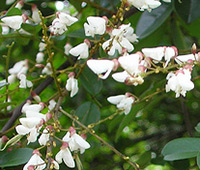
Derris Scandens Benth
Derris Scandens Benth from Leguminosae family is a woody vine growing throughout Asia. The stem of D.Scandens has been widely used in Thai traditional medicine for myalgia (muscle injury or strain) and as a treatment of osteoarthritis. Derris Scandens Benth extract also has an anti-inflammatory affect when applied.
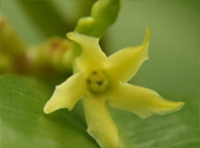
Cryptolepis Buchanani Roem and Schult
Cryptolepis Buchanani Roem and Schult is a climbing tree which is used in traditional Thai medicine for treatment of inflammation, including arthritis, muscle and joint pain.
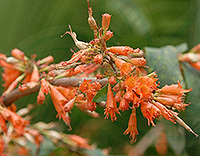
Kurz (Bignoniaceae) Leaves
Kurz (Bignoniaceae) also known as Radermarchera ignea grows wildly in north Thailand, and typically planted as a vegetable in home gardens for medicinal uses. It is used as antitumoral, antitrypanosomal and anti-inflammatory, dysentery, and rheumatism.
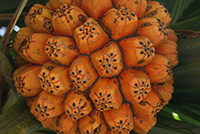
Pandanus
Pandanus tectorius is a highly variable species complex that grows in coastal ecosystems mostly in Southeast Asia. Pandanus is very important in Asian culture and tradition. It has been analyzed and identified as rich sources of nutrients. Pandanus cultivation is generally non-commercial and the plants are only grown for local use.
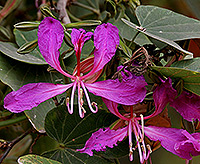
Bauhinia Purpureal
Bauhinia purpurea is a species of flowering plant in the family Fabaceae, native to Southeast Asia. It is believed to possess antibacterial, antidiabetic, analgesic, anti-inflammatory, antidiarrheal, anticancerous, nephroprotective, and thyroid hormone-regulating activity. Water extracts of the leaves of Bauhinia Purpureal have been shown to have anti-ulcer activity.
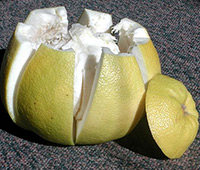
Pummelo Peel
Pummelo is a crisp citrus fruit native to South and Southeast Asia. It is usually pale green to yellow when ripe, tastes like a sweet, mild grapefruit. Pummelo peel contains spermadine which protects the cell from processes related to aging and cell damage. It combats wrinkles and skin aging and makes the skin appear youthful, fair and soft. It not only removes free radicals that harm the skin but also assists the body to boost the production of collagen.
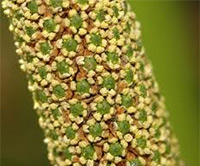
Calamus
Calamus is a plant that typically grows in watery, marshy places. It is a native to Europe and Asia. The health benefits of Calamus essential oils can be attributed to its properties like antirheumatic, antispasmodic, antibiotic, cephalic, circulatory, memory boosting, nervine, stimulant and tranquilizing.
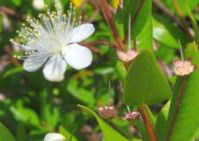
Myrtle
The health benefits of Myrtle Essential Oil can be attributed to its properties like antiseptic, astringent, deodorant, expectorant and sedative. Myrtle Essential Oil is obtained through steam distillation of flowers as well as leaves and the stem.
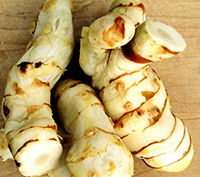
Galangal
Galangal is a close relative of ginger, and is an important and popular ingredient in the foods of Southeast Asia, especially in Thailand. It is also used as a stimulant and carminative. It is especially useful in flatulence, dyspepsia, vomiting and sickness of the stomach, and is also recommended as a remedy for sea-sickness. It tones the tissues and is sometimes prescribed for fever. Homoeopaths use it as a stimulant.
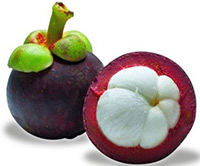
Mangosteen Shell
Health benefits of mangosteen include reduced risk of cancer, inflammation, allergies and diabetes. It has antioxidant, antifungal, antibacterial properties which help in protecting the body against various health ailments and also boosts immune system. Mangosteen is beneficial in maintaining healthy skin, weight management and providing relief from diarrhea and dysentery.
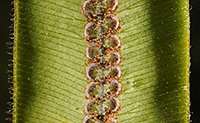
Oleandra Musifolia Leaves (Great Snake Vine)
Extract from Oleandra Musifolia Leaves help with muscle cramps, skin conditions such as eczema, increasing healing times for wounds, promotes normal menstrual cycles,
aids the body in the fight against arthritis, psoriasis,
natural support for asthma.
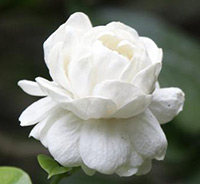
Jasmine
The health benefits of Jasmine Essential Oil can be attributed to its properties like antidepressant, antiseptic, aphrodisiac, antispasmodic, sedative and uterine. It has also been used as an effective cleansing agent.
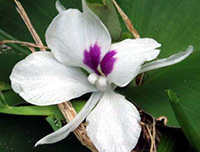
Kaemferia Galianga
Kaemferia Galianga is used to treat swellings, rheumatism, inflammation, and headaches. It also has tonic properties and its fragrance is very beneficial for the lungs.
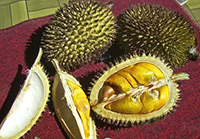
Durian Shell
Durian is regarded by many people in southeast Asia as the "king of fruits", for its large size, strong scent, and formidable thorn-covered husk. Application of juice obtained from the Durian leaves and shell on heads of people suffering from fever helps reduce or totally relieve the symptoms.
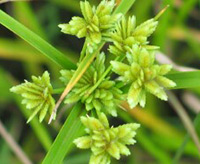
Sedges Head
The Sedge is a vigorous, reed-like, aquatic plant, flourishing in ditches, by the margins of lakes and streams and in marshy places. It is used as aromatic stimulant and mild tonic. Its essential oils are used for aromatherapy.
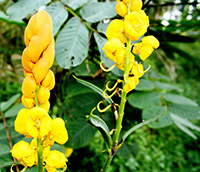
Senna Alata
Senna alata, the Candle Bush, is an important medicinal tree in the subfamily Caesalpinioideae. It also known as a Candelabra Bush, Empress Candle Plant, Ringworm Tree or "candle tree". I has very effective fungicidal properties, for treating ringworm and other fungal infections of the skin.
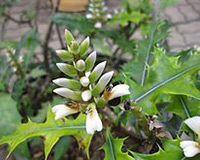
Acanthus Ebracteatus
Acanthus Ebracteatus is a species of shrubby herb that grows in the undergrowth of mangroves of south-east Asia. This Thai herb is effective in wound healing.
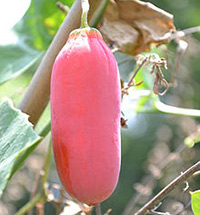
Coccinia Grandis(L) Voigt
Coccinia Grandis is claimed to help regulate blood sugar levels. It also used as an antioxidant, anti-hypoglycemic agent, and immune system modulator.
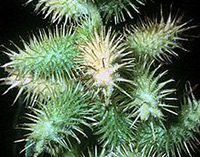
Xanthium Strumarium
Xanthium Strumarium is applied to wounds or used to remove splinters. The whole plant, specially root and fruit, is used as medicine. According to Ayurveda, X. strumarium is cooling, laxative, fattening, anthelmintic, alexiteric, tonic, digestive, antipyretic, and improves complexion. It said that it cures leucoderma, biliousness, poisonous bites of insects, salivation and fever. Antibacterial activity of xanthinin has also been reported.

Clerodendrum Inerme(Linn) Gaertn
Clerodendrum Inerme is a hedge plant belonging to the Verbenaceae family, traditionally used for anti-
inflammatory and analgesic effect and possessing antiviral properties.
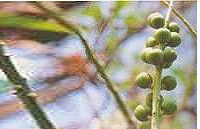
Croton Oblongifolius Roxb.
Croton Oblongifolius Roxb. leaves exhibit anti-inflammatory and antibacterial activity.
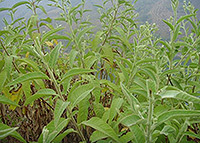
Borneol
Although borneol is not an herb per se, it is nevertheless a common ingredient in many traditional Asian herbal formulas. Borneol is a compound derived from dryobalanops aromitaca, a tree that belongs to the teak family. It helps improve circulation, treat bronchitis, coughs and colds, can relieve pain caused by rheumatic diseases and sprains, reduce swelling, relive stress, and can be used as a tonic to promote relaxation and reduce exhaustion.
References: PMC - US National Library of Medicine (http://www.ncbi.nlm.nih.gov/pmc/)
References: USDA - United States Department of Agriculture (http://www.usda.gov/wps/portal/usda/usdahome)
References: Journal of Natural Products - ACS Publications (http://pubs.acs.org/journal/jnprdf)
References: Science Direct (http://www.sciencedirect.com/)
